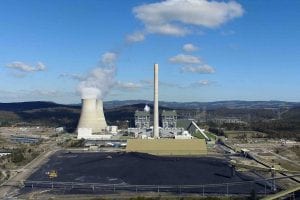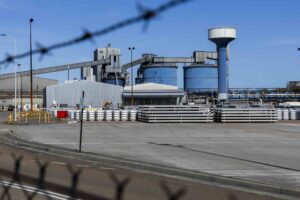To listen to the gas industry advertisements on radio, you’d think business was booming. As winter approaches, everyone is rushing out to buy a new gas heater.
But a look at the numbers shows that in eastern Australia, gas demand is going nowhere.
Gas demand peaked in 2012, back when gas was cheap, the idea of gas as a climate solution was more believable, and the favourable economics of the all-electric home less known. If we draw a modest 2% per year growth trend from the 2012 peak, gas demand would now be 800 petajoules (PJ) per year.
Instead it’s only three quarters of that, 600 PJ. (See chart.) So what has brought about the decline of the eastern-Australian gas industry?

(data from the Australian Energy Market Operator’s March 2020 Gas Statement)
Australia’s population grows every year. The Australian economy has been growing for decades.
An Australian commodity supplier would hope their business would grow with those trends. But the gas industry hasn’t been able to grow. Rather, it’s shrinking. And as we now expect for any climate-damaging fossil fuel, this decline will continue.
Gas burned to make electricity – down
Since 2012, the volume of gas burned to make electricity is down 30%. This quantity will swing up and down from year to year as coal plants close and as more renewable energy and energy storage comes online.
However by 2030, the Australian Energy Market Operator (AEMO) forecasts that the volume of gas burned to make electricity will be only one-fifth of what it was in 2012.
Gas burned in industry – down
The volume of gas used by industry is also down since 2012. This is hardly a surprise given the dramatically-higher wholesale gas prices brought about when, in 2015, eastern-Australian gas supplies were opened up to overseas markets.
In its 2020 “Gas Statement of Opportunities” – or should that now be “non-opportunities” – AEMO cited recent closures of an Albury paper mill and a Melbourne plastics factory as examples of industrial demand-destruction hastened by increased gas prices.
Gas burned in buildings – going nowhere
Readers would be aware of the large numbers of new office and residential towers and suburbs built in and around our cities over the last decade. Particularly in the residential gas industry’s heartlands of Victoria and the Australia Capital Territory (ACT), this should have translated to increased gas sales.
But over the last decade there has been no growth in the volume of gas used in the building sector. Why not?
One reason is warmer winters, driven by climate change – a negative feedback loop for the fossil fuel industry.
Another reason is the trend to all-electric Australian homes. Using air-source heat pumps for heating water and living spaces (e.g. reverse-cycle air conditioners) can significantly reduce a home’s energy bill, versus remaining connected to the gas grid.
At the 12,000 member Facebook group My Efficient Electric Home we continue to amass thousands of case studies – people getting their homes off gas.
Some Australians are even accessing lower-interest-rate mortgages by improving the energy performance of their home. One way to do that — is to rid your home of gas.
Lawmakers, regulators, suburb developers, and home builders realise that gas is no longer an “essential” service. Australian homes can be better off without it.
Covid-19 Economic Downturn
Acting to contain the virus will impact Australian manufacturers, and is likely to further reduce the amount of electricity and gas used in that sector.
Opposing that, globally, oil and gas demand and prices have crashed, so there will be some gas-price relief for Australian industry.
So is AEMO still forecasting a gas-supply shortfall for 2025?
After 55 years, the massive Bass Strait gas fields are winding up.
The joint-venture partners Esso and BHP will soon be down to producing gas only from fields contaminated with high levels of naturally-present carbon dioxide – which limits the volume of gas that can be delivered into the peak-demand winter season.
With Esso having alerted the world to this situation, in its Gas Statement last year, AEMO forecast gas-supply shortfalls for 2025. In its latest Gas Statement, AEMO have moved that up one year to 2024.
In other words for winter 2024, just five winters from now, AEMO have no firm idea how gas demand will be met.
In dealing with a projected supply/demand gap, AEMO’s modus operandi is to ignore the gas demand-side, and rather to call for supply-side infrastructure expansion: more wells drilled in farming lands and forests, more fracking, more pipelines, and even gas import terminals up and down the east coast.
Unsurprisingly, the gas industry radio ads spruiking new gas heaters and the “reliability” of gas fail to mention this winter 2024 supply concern.
Demand-side options close the gap
With consumer education and other government support for air-source heat pumps, as well as removing archaic government support for fossil gas burning, a potential supply gap can be closed with demand-side measures.
Our farmers can then continue to tend to our food-bowl instead of worrying about an impending gas industry invasion.
Tim Forcey is an independent energy advisor, a former energy advisor at the University of Melbourne Energy Institute (MEI), a former planning principal at the Australian Energy Market Operator (AEMO), and a former facilities and operations advisor with BHP.








